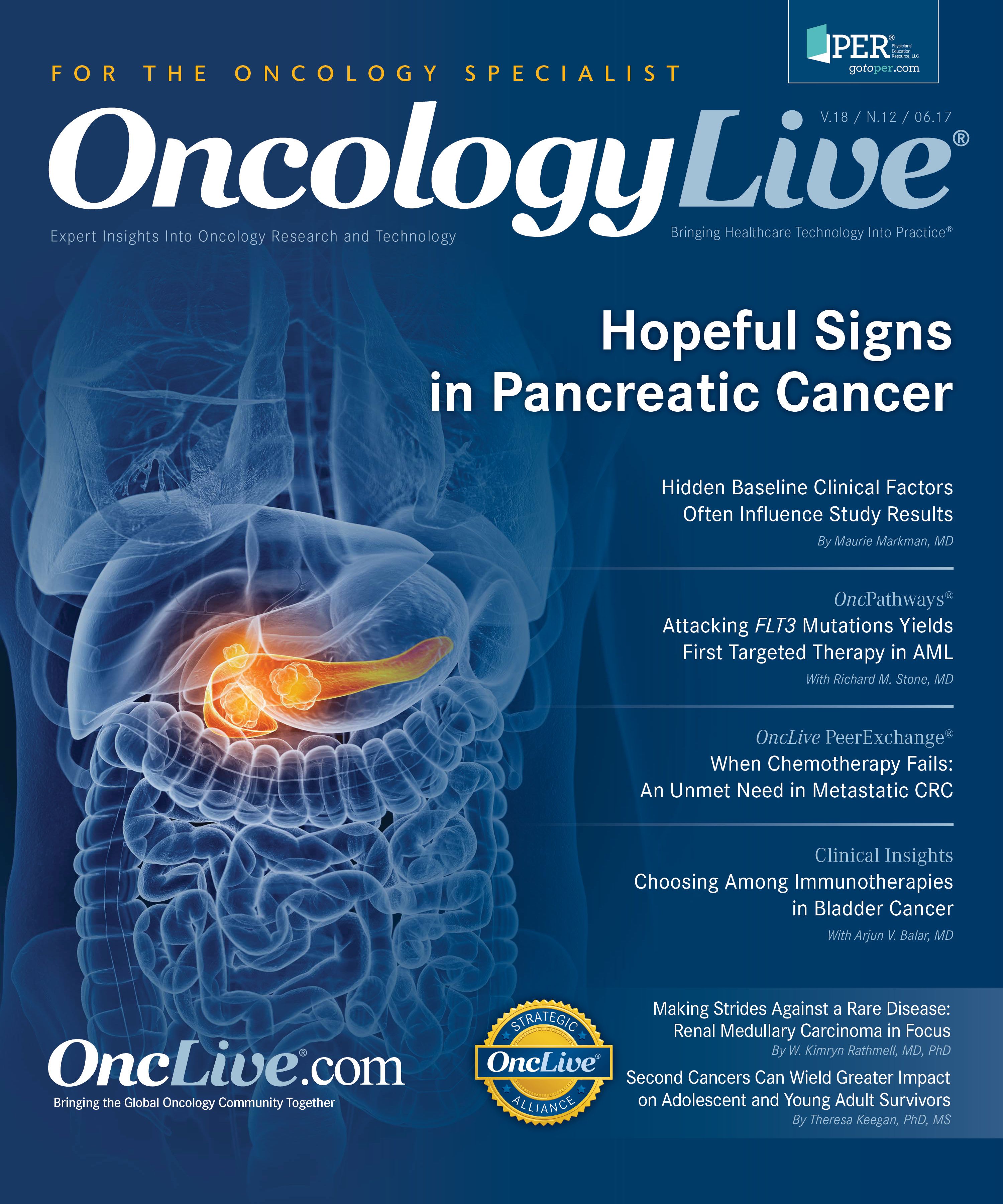Publication
Article
Oncology Live®
Making Strides Against a Rare Disease: Renal Medullary Carcinoma in Focus
Author(s):
Renal medullary carcinoma is a rare but devastating tumor type almost exclusively affecting young adults carrying 1 copy of hemoglobin beta (HBB) harboring the A17T mutation (HbS).
W. Kimryn Rathmell, MD, PhD
Director, Division of Hematology and Oncology
Cornelius A. Craig Professor of Medicine
Professor, Medicine, Cancer Biology, and Biochemistry
Vanderbilt-Ingram Cancer Center Nashville, TN
Renal medullary carcinoma (RMC) is a rare but devastating tumor type almost exclusively affecting young adults carrying 1 copy of hemoglobin beta (HBB) harboring the A17T mutation (HbS). The pathophysiology of the association to HbS, or sickle cell trait, remains unknown. This is a highly aggressive neoplasm, for which there are no established guidelines to direct standards of care.1
Similarly, the diagnosis of these cancers can be difficult, unless the urologic oncologist, pathologist, and/or medical oncologist is alert to the possibility. RMC management can also be challenged by the unique age distribution, which overlaps pediatric and adult oncology. The exact incidence of the disease in the United States is unknown, but it is reasonable to think that there are fewer than 500 cases annually diagnosed, such that an individual oncologist might only encounter 1 of these cases in their career.
Multiple case reports have suggested these cancers can be responsive to multiagent platinum regimens, which are the current mainstay of treatment for this cancer.2 It is critical to be alert to the rare patient who presents with this cancer, because the diagnosis may be delayed by the uncertainties of histology and chemotherapy is not typically considered in patients with renal neoplasms. A case report of a patient responding to bortezomib has led to interest in this drug class3 , and recently combination chemotherapy with bortezomib has been reported with good response in 2 pediatric patients.4
Recent studies have shed light on the biological underpinnings of RMC, namely a clear association with SMARCB1 (also known as INI1) mutations, implicating chromatin reprogramming and epigenetics in the development of this cancer.5,6 This finding is critical to sealing the diagnosis, since a loss of SMARCB1 staining can confirm a diagnosis of RMC.
This finding also suggests a possible role for therapeutics targeting the epigenetic program, of which a number are currently undergoing evaluation. Ongoing slinical trials are testing EZH2 inhibitors at The University of Texas MD Anderson Cancer Center, under the supervision of Nizar M. Tannir, MD, a long-time champion for studying rare kidney tumors, and at a growing number of centers across the country. This interest is based on findings linking sensitivity to inhibition of EZH2, an epigenetic regulator, with SMARCB1 loss.7
Little is known about the responsiveness of these cancers to checkpoint immunotherapy strategies. Researchers from Vanderbilt University and colleagues recently reported on a single case of a patient who had biopsy-confirmed progression after chemotherapy and was treated with nivolumab.8 This patient remains in complete response and disease free 2 years later. The range of responses, however, is not known.
In an attempt to reach some consensus on the diagnosis and treatment of RMC, the William Guy Forbeck Foundation has provided support for an international meeting of experts with experience dealing with sickle cell trait manifestations and RMC. This meeting, held in April 2016 in Nashville, Tennessee, resulted in a consensus manuscript, in press in the Journal of Oncology Practice. In addition to developing consensus guidelines regarding diagnosis and treatment algorithms, the group concluded that the most pressing need going forward was to raise awareness among at-risk patient groups and physicians about the specific features of RMC.
Collectively, we have partnered to develop the RMC Alliance, with a goal to increase visibility and awareness of this cancer type as distinct from other more common renal cell carcinomas, and to enhance communications between groups with a mission to accelerate advances in the care of these patients.
Equally important in raising public awareness is the role of advocacy, with efforts led by a group of remarkably dedicated advocates. Information is available from the group R.M.C. at RMCsupport.org and the Chris Johnson Foundation at chrisjohnsonfoundation.org. Other efforts are underway to engage and educate at-risk groups. A second meeting of the RMC Alliance, open to all interested parties, is scheduled to be held in conjunction with the 49th Congress of the International Society of Paediatric Oncology on October 12 in Washington, DC.
References
- Shah AY, Karam JA, Malouf GG, et al. Management and outcomes of patients with renal medullary carcinoma: a multicentre collaborative study [published online December 9, 2016]. BJU Int. doi: 10.1111/bju.13705.
- Rathmell WK, Monk JP. High-dose-intensity MVAC for advanced renal medullary carcinoma: report of three cases and literature review. Urology. 2008;72(3):659-663. doi: 10.1016/j.urology.2008.05.009.
- Ronnen EA, Kondagunta GV, Motzer RJ. Medullary renal cell carcinoma and response to therapy with bortezomib. J Clin Oncol. 2006;24(9):e14. doi: 10.1200/JCO.2005.05.0344.
- Carden MA, Smith S, Meany H, et al. Platinum plus bortezomib for the treatment of pediatric renal medullary carcinoma: two cases [published online January 4, 2017]. Pediatr Blood Cancer. 2017. doi: 10.1002/pbc.26402.
- Calderaro J, Moroch J, Pierron G, et al. SMARCB1/INI1 inactivation in renal medullary carcinoma. Histopathology. 2012;61(3):428-435. doi: 10.1111/j.1365-2559.2012.04228.x.
- Liu Q, Galli S, Srinivasan R, et al. Renal medullary carcinoma: molecular, immunohistochemistry, and morphologic correlation. Am J Surg Pathol. 2013;37(3):368-374. doi: 10.1097/PAS.0b013e3182770406.
- Moreno N, Kerl K. Preclinical evaluation of combined targeted approaches in malignant rhabdoid tumors. Anticancer Res. 2016;36(8):3883-3887.
- Beckermann KE, Jolly PC, Kim JY, et al. Clinical and immunologic correlates of response to PD-1 blockade in a patient with metastatic renal medullary carcinoma. J Immunother Cancer. 2017;5:1. doi: 10.1186/s40425-016-0206-1. eCollection 2017.









